Creating a sophisticated, comfortable, and visually appealing space is one of the biggest challenges in interior design. How do you add depth to a space without making it feel heavy? How do you mix textures and materials without losing coherence? How do you combine functionality with identity?
"A room should start a conversation before people actually start exchanging words."
Barry Dixon, American Interior Designer
This is where layering comes in. It's not just a technique, but a transformative design philosophy. It's about working with space in layers: superimposing, balancing, and structuring. From the combination of fabrics to the choice of materials, from the subtle repetition of shapes to the distribution of volumes and proportions, layering has the power to elevate any space.
But this approach requires more than aesthetic sensitivity. It demands method, intention, and mastery of detail—essential characteristics for anyone aspiring to succeed in interior design. A well-layered space isn't a coincidence. It's the reflection of conscious decisions that combine comfort, sophistication, and purpose.
In this article, we share principles, examples, and practical guidelines for confidently applying layers to your projects, creating rich, elegant, and powerful spaces without falling into excess or visual clutter.
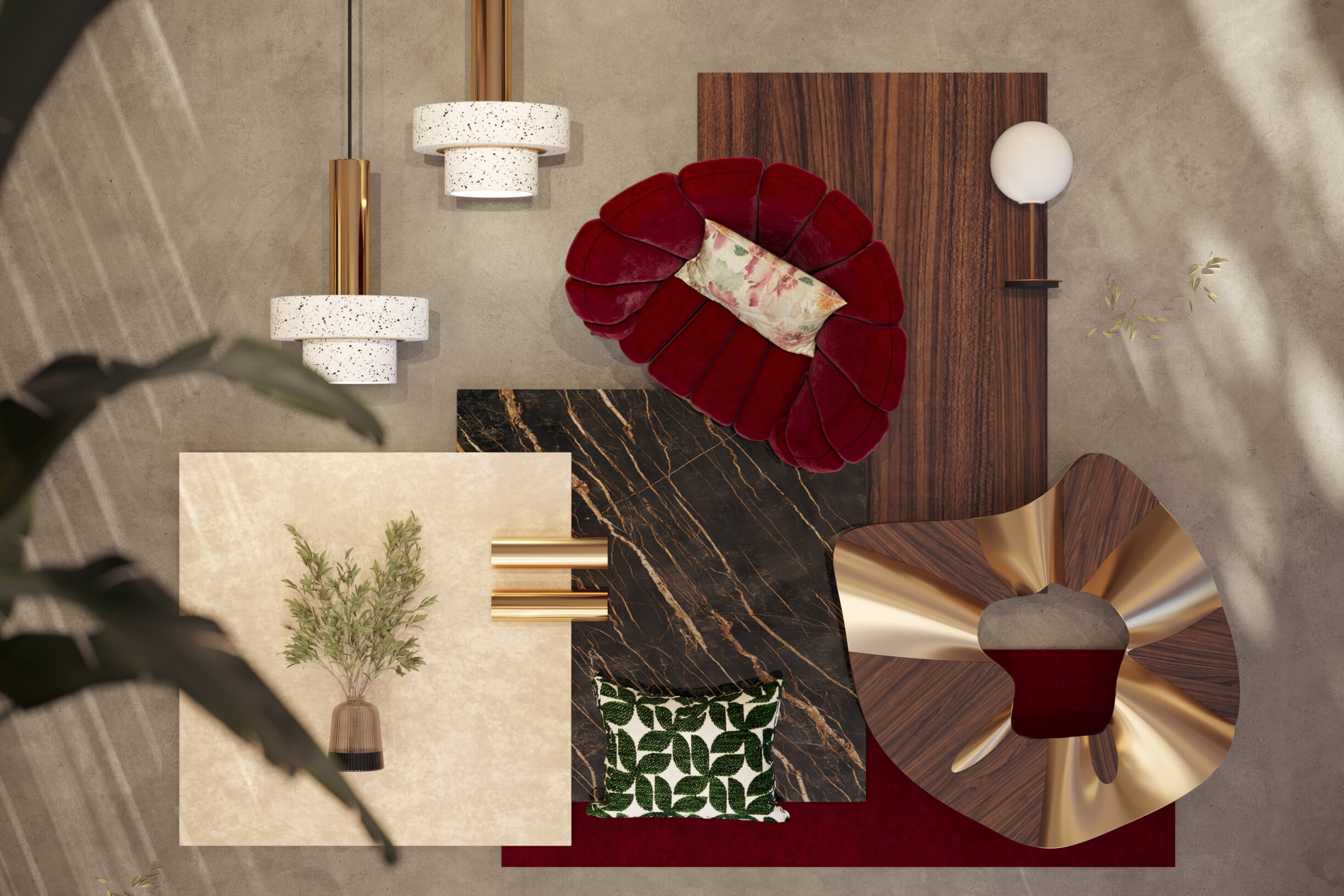
The term layering may seem simple at first glance, but its application in interior design is nuanced and requires sensitivity. More than a technique, layering is a compositional philosophy that consists of superimposing different elements — textures, colours, materials, and objects — to create areas with depth, balance, and personality.
Unlike disorderly accumulation, effective layering is a deliberate and controlled process. Each layer has a function: it can highlight a texture, soften a contrast, or reinforce a cultural or emotional narrative within the space. This intentional approach gives you the power to shape the narrative of your design.
In the context of design, layering takes many forms:
Layering fabrics: curtains, pillows, rugs, and upholstery combine textures and patterns for comfort and sophistication.
Layering furniture and accessories: the juxtaposition of volumes, heights, and styles creates visual dynamics and differentiated zones.
Layering colours and materials: the balance between contrasts and harmony is essential to avoid visual overload and ensure an elegant result.
This approach helps create spaces where the user feels engaged, welcomed, and inspired, elevating the concept of elegant decor to the level of sophisticated interiors with soul.
In interior design, layering fabric is one of the most impactful and accessible ways to add texture, colour, and comfort to a space. The careful layering of curtains, pillows, and rugs creates a tactile and visual experience that elevates any room, giving it a sense of depth and sophistication.
More than just controlling light, curtains define the atmosphere of a room. A play on translucent and opaque fabrics, light and heavy textures, creates a visual balance that conveys elegance without rigidity. Layering allows the room to be modulated throughout the day, giving it movement and versatility.
Small in scale, but powerful in impact. The secret to layering lies in the deliberate mix of textures in the design, such as linen, velvet, and cotton, as well as patterns that complement each other. Grouping pillows of different sizes, fabrics, and hues reinforces the sense of care and sophistication, without falling into repetition or excess.
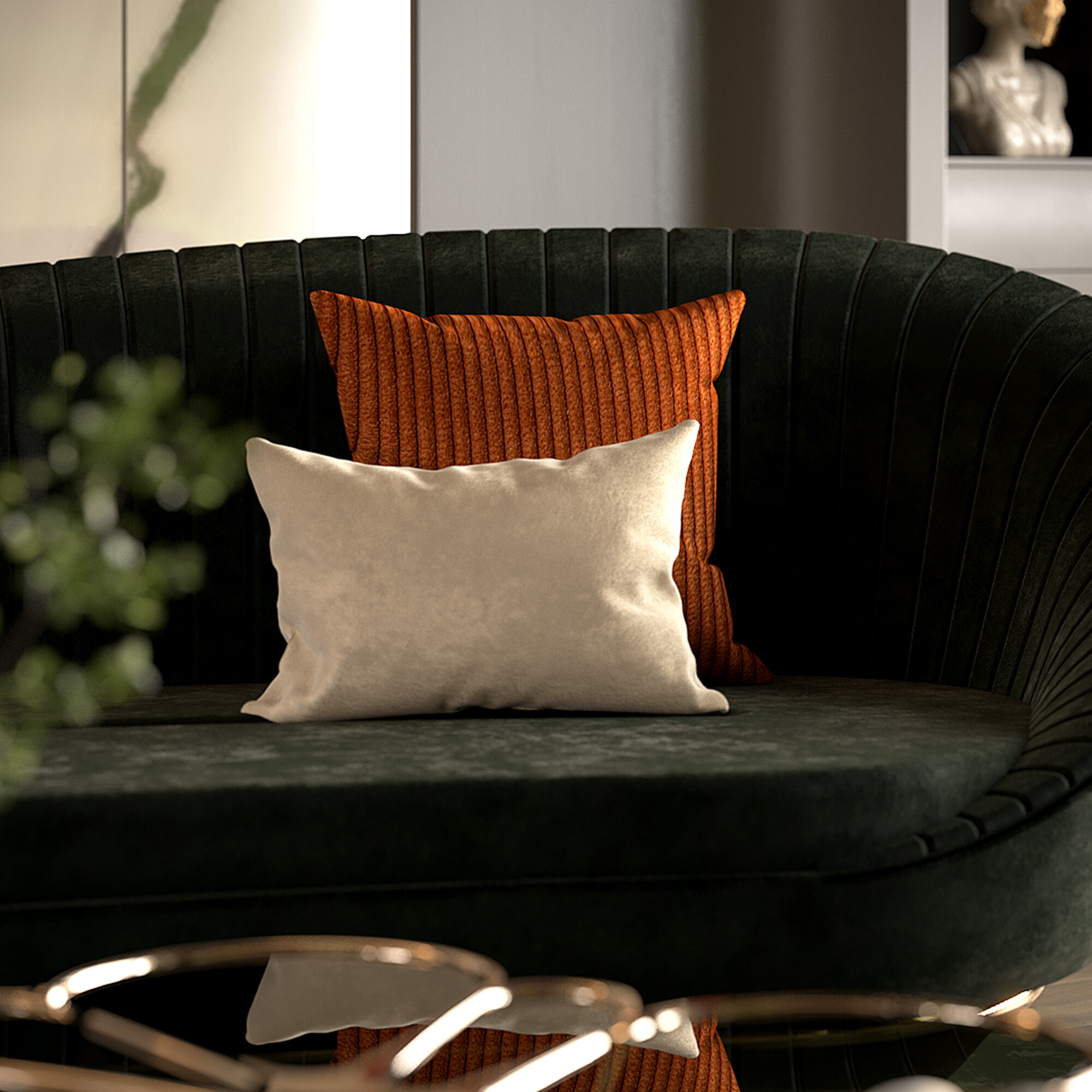
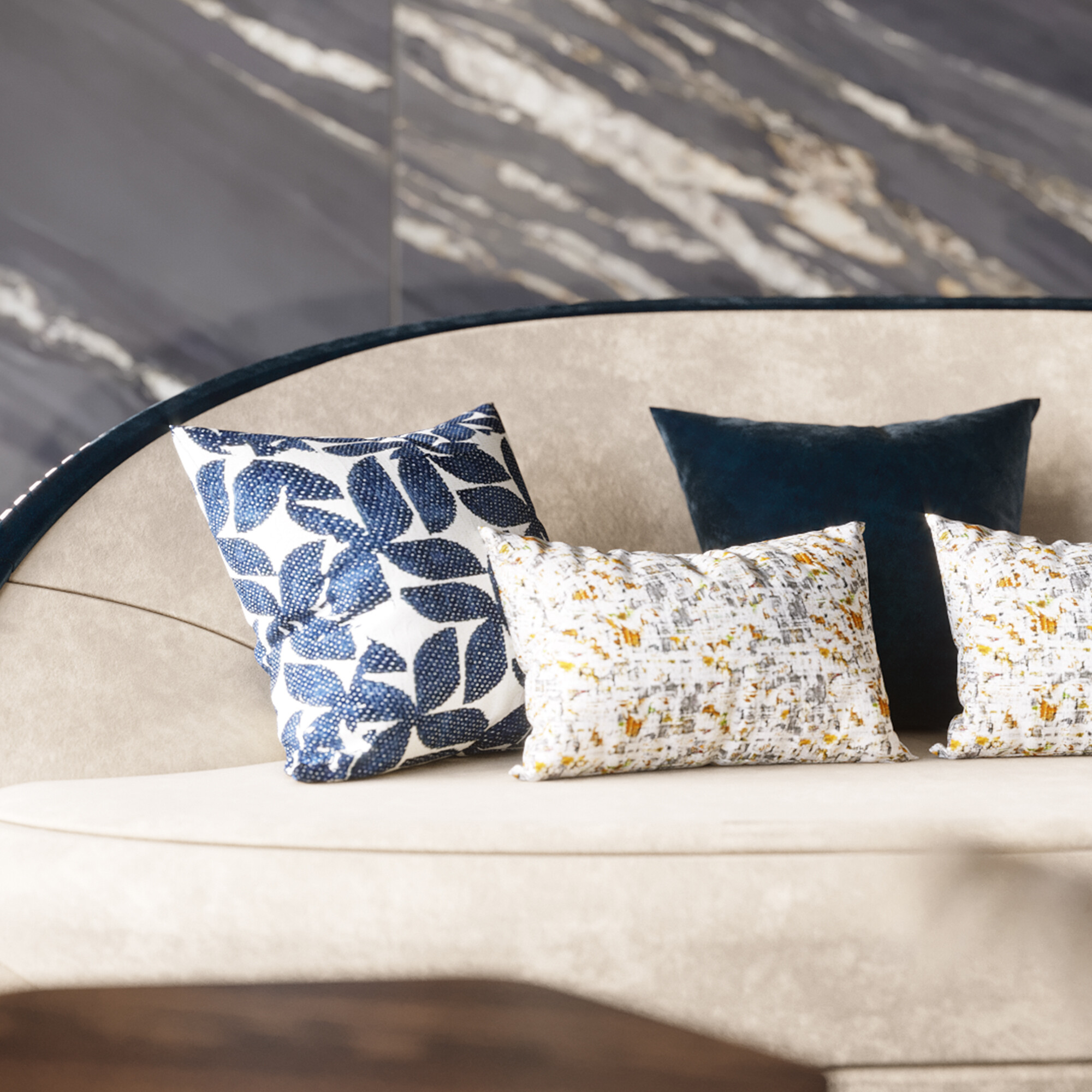
When used well, rugs act as anchors that structure and delimit zones in a space. A neutral, simple-textured base rug can be enriched with additional layers. How? With a rug with a contrasting pattern or colour, like the Adamastor rug from ALMA de LUCE. This way, you'll create visual depth and tactile interest. It's essential to maintain a balance between scale and colour coherence to avoid fragmenting the space.
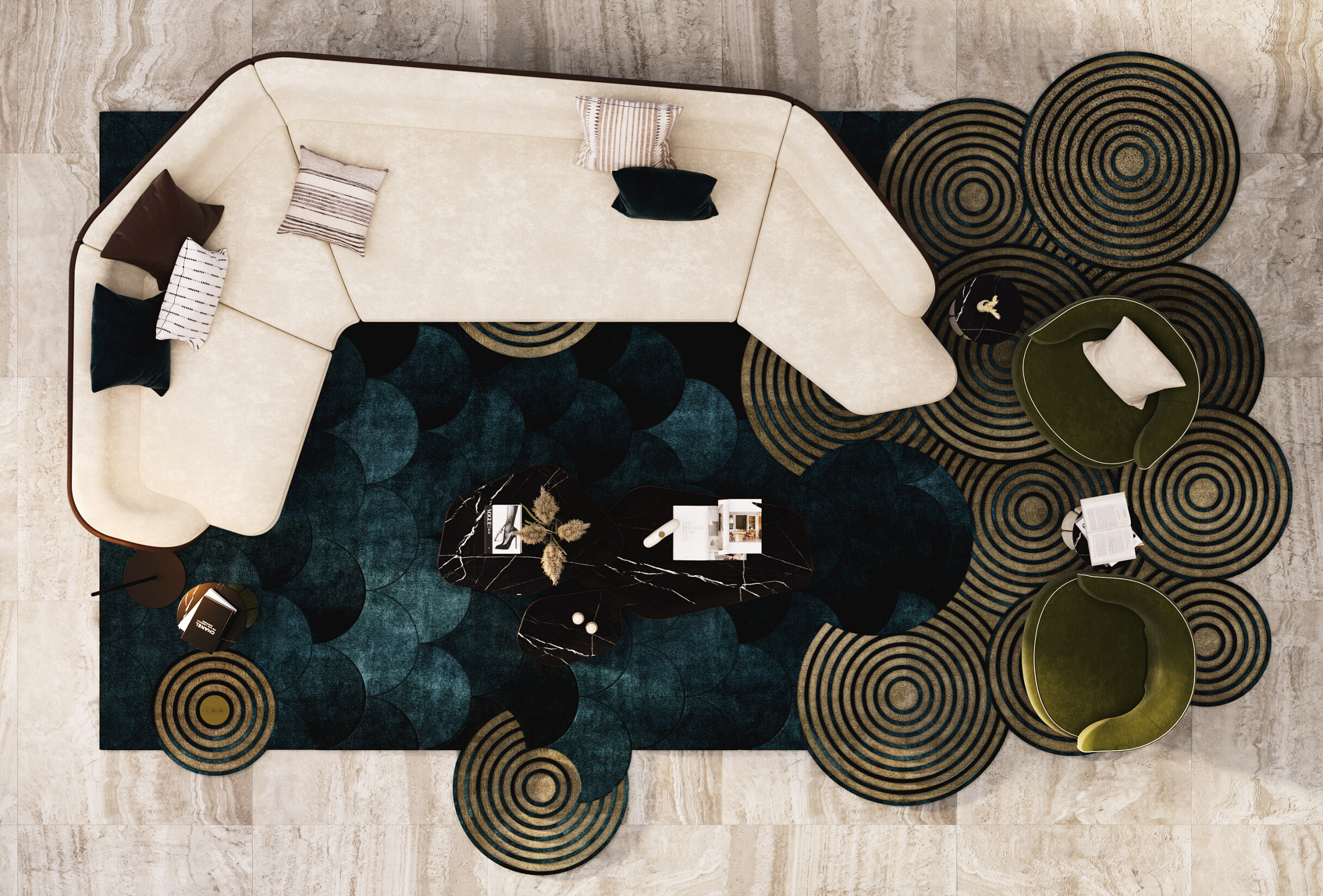
Layering fabrics should be thought of as a conscious compositional gesture: a dialogue between luxury textiles that reveals intention, comfort, and a luxurious, elegant, and timeless aesthetic.
The concept of layering isn't limited to textiles. It subtly and strategically extends to furniture and decorative accessories, allowing us to create spaces with narrative, dimension, and personality. Here, layering translates into how we intentionally combine materials, volumes, heights, and styles.
The balance between pieces of different proportions and styles is the starting point. A chair with a unique round shape, like the Metamorphosis armchair, sits alongside the minimalist Ghadames sofa from ALMA de LUCE. A brushed walnut veneer cabinet with a matte varnish finish, like the Haussman cabinet, paired with a contemporary mirror, like the Amaterasu mirror from ALMA de LUCE. These contrasts, when well thought out, create visual rhythm and a sense of lived-in space, where each element occupies its place without competing.
Overlapping also occurs in the way we arrange objects: a side table overlapping the rug, or a low stool beneath a console, creates physical layers that enrich the interpretation of the space.
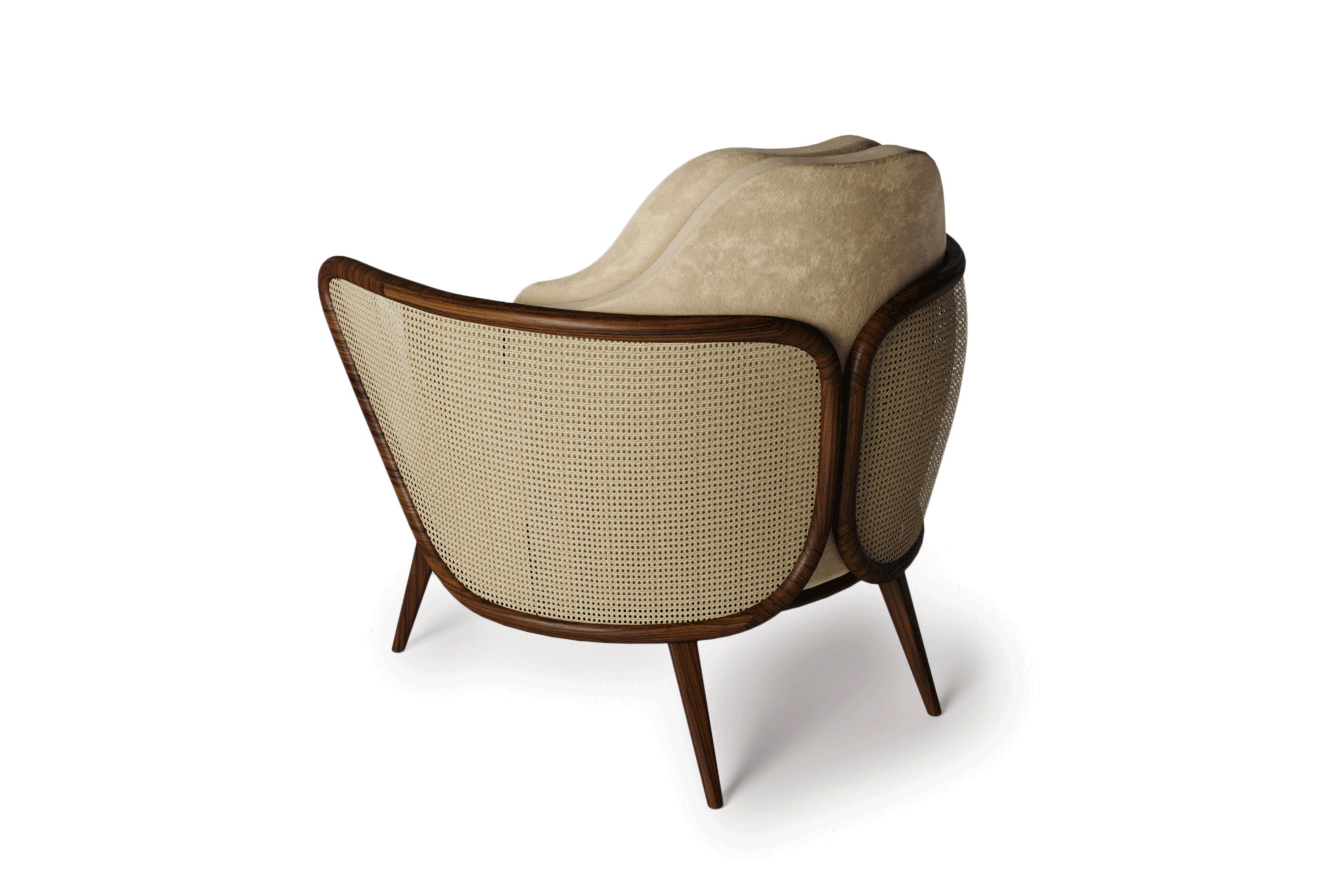
Books, lamps, artwork, vases, sculptures—these elements are essential for adding expression and sophistication to interiors. The key is curation: choosing pieces made from different materials, such as ceramic, glass, stone, and metal, and creating asymmetrical arrangements that create visual movement without creating noise. A set of objects arranged at varying heights, for example, guides the eye and suggests a story.
Layering in this dimension works almost like choreography. It's not about "filling the space" but about creating pauses, accents, and flows. Good design knows where to add and where to let things breathe.
The result? Spaces with depth, coherence, and that touch of luxury in the details that distinguishes the ordinary from the memorable.
Mastering layering requires a strategic understanding of the relationship between textures, patterns, and colours. This trio functions like a virtuous triangle: when well balanced, it transforms an ordinary space into a visually rich, engaging, and truly sophisticated area.
In interior design, texture is often the least obvious element at first glance, but it's the one that adds depth and sensory appeal to a space. The mix of fabrics and materials (linen and velvet, polished wood and rough stone, handcrafted ceramics and brushed metals, for example) activates the sense of touch and creates subtle visual layers. The presence of textures in design invites contemplation and touch, making the space more human and lived-in.
Patterns introduce movement, identity, and cultural context. From geometric to organic, from classic to ethnic, they should be used intentionally. When layering, the key is varying scales: a large pattern can coexist with a smaller one, as long as there's a connecting point, whether a standard colour or a complementary motif. Avoiding excessive repetition and ensuring visual pauses is essential to maintaining balance.
Finally, colour. It's the most emotional element of the triangle. It defines atmospheres, influences perceptions of space, and communicates intentions. In a project with sophisticated interiors, the colour palette should be elegant, coherent, but not monotonous. Layering allows you to play with different shades of the same colour (so-called "tonal hues"), adding contrasting accents to create points of interest. Warm neutrals, deep blues, earthy greens, or aged golds are examples that evoke timeless elegance.
The beauty of layering lies in its invisible complexity, where less can be more. It's in that sense of visual comfort that arises from a well-thought-out composition, where nothing seems forced. But this balance is often harder to achieve than it looks. Here are five guiding principles for applying this design philosophy with intention and subtlety:
1. Define a focal point before composition
Start by identifying where you want the eye to stop. It could be an iconic piece of furniture, a work of art, or a textured wall. From there, build layers around it, avoiding visual dispersion.
2. Working in visual and sensory layers
Apply layering progressively: neutral base → contrasting textures → prints → colour accents → decorative details. This ensures coherence and prevents the space from becoming visually saturated.
3. Create visual breaks
Negative space, that is, space that allows space to "breathe," is just as important as filled space. By creating cleaner zones, we're enhancing the rich layers surrounding these spaces. Less can be more. Too much visual information is one of the most common mistakes in interior design and one of the most difficult to correct.
4. Use a controlled palette of materials
Choose 3 to 5 primary materials and work with variations. For example: natural wood, stone, linen, aged metal, and glass. The intentional repetition of these elements reinforces the space's identity without making it predictable.
5. Testing and adjusting with the visitor's eye
Step back, observe, change position. A well-layered space should surprise with subtleties at every angle, but never feel overwhelming. It asks you, "What do I want you to feel here?" The answer should always be an emotion, not a sum of objects.
More than a technique, layering is a way of seeing and thinking about space. A philosophy that combines sensitivity, intention, and knowledge to tell stories through superposition. In practice, it's about creating spaces that reveal layers of meaning, that invite discovery, and that linger in the memory of those who inhabit them. Because a well-composed space can't just be seen, it must be felt.
The question is: what story do you want to tell?
Did you like our tips? So, stay tuned to our blog for more information and curiosities from the universe of architecture, interiors, and construction! You can also follow us on Instagram, Facebook, and Pinterest for all updates and news.